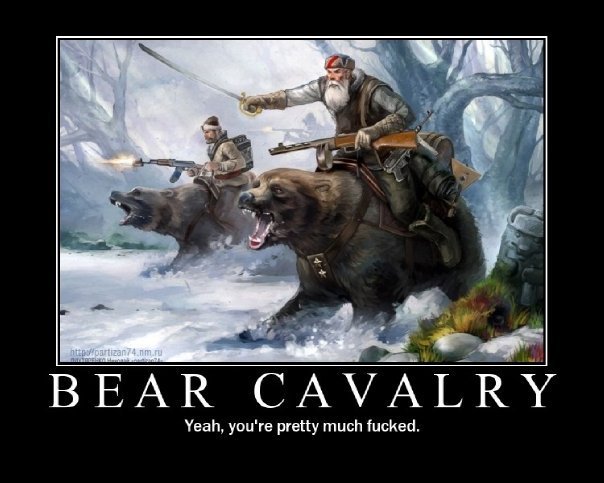Ok. No late flipping, C it is.
-------------------------------------------------------------------------------------------------------------------------------------------------------------
The fear of distant enemies momentarily gone, we could focus again on the beasts living in the mountain next to us. In the following weeks, several expeditions were mounted. Their objective: observe the habits of the bears and find out anything about the shadowy stalkers.
The results were comforting: both beasts clearly tended to avoid our men when they spotted us, preferring to hunt down easier prey. Our new obsidian weapons could penetrate even the thickest fur, until the hunters declared that they could deal easily with any attack.
The great bear was a solitary animal, living in small family groups. The shadowy stalker, once we managed to observe it, appeared to have a pack mentality: it hunted like we did, luring its prey in deadly ambushes, retreating when outmatched, bringing numbers when the strength of the few could not suffice. A very smart beast.
Now we just had to decide what to do next:
The tamers, once reassured about the effective danger the beasts posed, appeared intrigued.
A. Some proposed:
'The wolf (thus we named the shadowy stalker) appears to be a very smart animal. Domesticating them could bring great help in our herding duties, and they could protect us and our animals effectively.'
B. Other tamers were attracted by the great, majestic bear:
'While fewer in numbers, the bears clearly exhibit greater strength. If we could ally with this beast any enemy we meet in the future will have to think twice before attacking us.'
C. The keepers of fire and some hunters chimed in:
'There is no guarantee we will manage to tame any of these animals. They are predators, it was never attempted. Now that we know they pose no real danger and the surrounding area is open, we should focus on other enterprises' (Author note: option C does not advance 'time' but just opens up other avenues).










